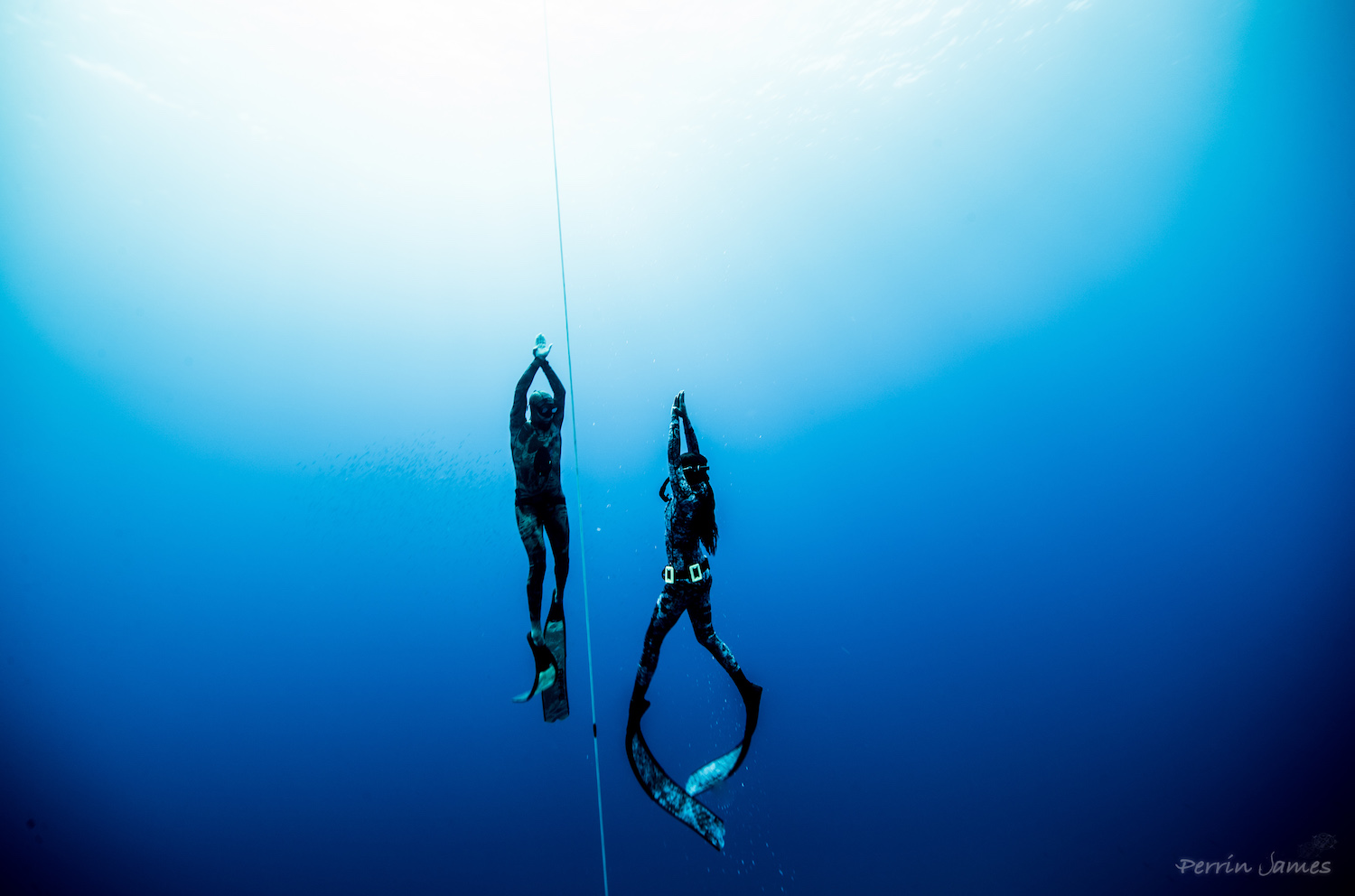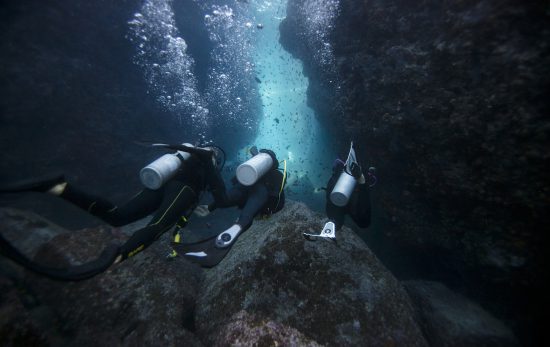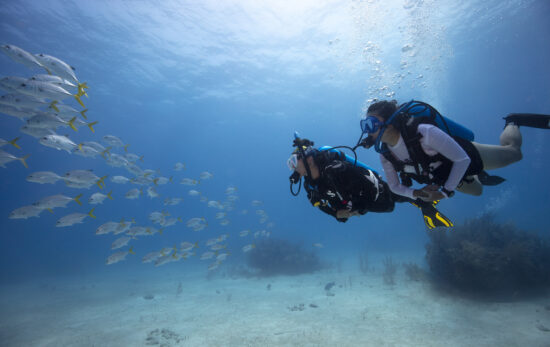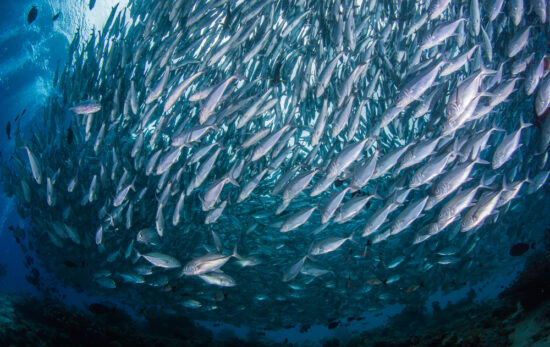Diving in currents can sound like a daunting experience and makes many divers nervous when trying it for the first time. Surprisingly, it’s actually one of the easiest ways of diving and can be super fun if you have a basic understanding and knowledge of tides and currents as well as some essential tips and techniques that make “going with the flow” an absolute breeze! Here’s what you need to know to master drift diving.
What Factors Influence Currents?
Like many things in life, diving in currents is easier if we have some background knowledge behind it, for example, how and why currents occur. Currents vary in accordance with many factors; the tides, lunar cycle, topography of a dive site and even the time of year. Here’s how these factors play into your dives and how timing your entry can affect your dives:
- Tidal currents vary according to the time of the tide because the vertical rise and fall of the tides creates a horizontal movement of water which is travelling either from the open ocean towards the shore on a rising tide or from the shoreline to the open ocean on a falling tide.
- There are periods which we call “slack high” and “slack low”. This is when the tide reaches its highest and lowest points respectively – during these periods horizontal water movement is minimal so these are the times when you will have less current (drift). As a general rule of thumb, diving on slack high is usually when visibility will be best.
- On days when there is a large tidal exchange (a big difference between high and low tide levels) currents tend to be faster because there is a greater horizontal movement of water. Large tidal exchanges usually happen close to the full moon and new moon. In contrast, during “neap tide” periods when there is only a small tidal exchange, currents will be at their weakest. Neap tides occur twice per month, during the first and third quarter of the lunar cycle.
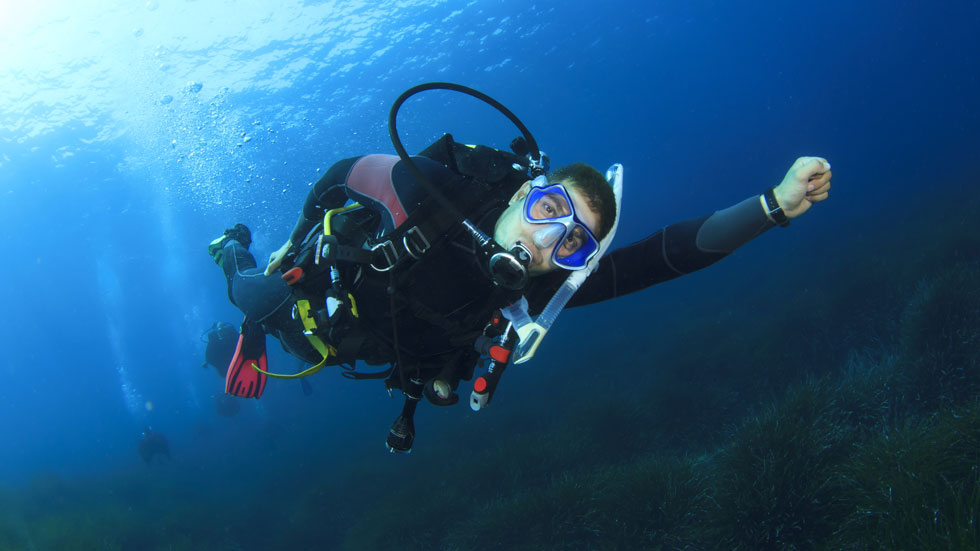
How To Master Drift Diving
So now you understand how to time your dives according to the tides. Next, it’s important to understand how to handle current when you are underwater. Drift diving brings with it significant advantages – like being able to access different dive sites and explore larger areas – but there are also some additional considerations.
- Planning: Planning your dives is of utmost importance. Of course, this should include all aspects of regular dive planning (maximum bottom time, depth, signals, buddy contact and dive objective) but also pay special attention to the distances you intend to travel, current strength and contingency plans such as if the current changes direction or strength and procedures for buddy separation.
- Buoyancy: Most divers’ biggest fear is crashing into objects and damaging themselves, their equipment or the reef. The most important skill to master for drift diving is buoyancy. If you can maintain neutral buoyancy you’ll be able to drift along without worrying about collisions or mishaps.
If you want to work on your buoyancy before diving in currents try taking the PADI Peak Performance Buoyancy Specialty Program which will give you a greater understanding of the physics behind buoyancy, teach you how to gauge your weights and position them correctly, how to use your breathing to assist you and how to move effectively and efficiently through the water. All of these skills will lead to greater comfort and confidence in drifts.
- Streamlining: Think about streamlining yourself and your gear. Secure all dangling equipment such as gauges and alternate air sources to reduce drag, minimize contact with the reef and reduce the chances of becoming entangled.
- Shelter Options: Study the reef and use formations as “shelter” if you want to stop for a breather. When you are diving in currents remember that current strength is least when you are positioned close to the reef or bottom.
- Current Indicators: Keep watching for current indicators such as soft corals being “blown over” like trees in the wind or the direction the reef fish are swimming in – generally they will swim head first into the current to feed on incoming plankton.
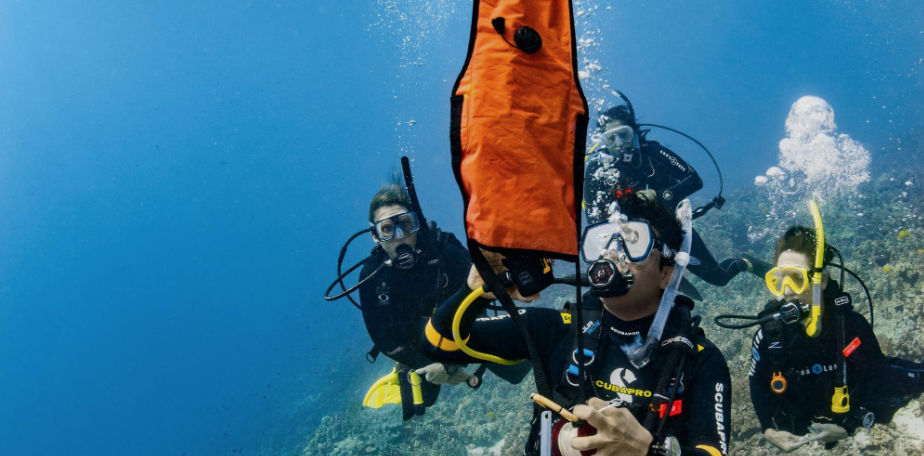
- Relax: Do not fight the current, relax and go with the flow. Trying to swim into the current can quickly lead to exhaustion and increase diver stress.
- Surface Markers: Make sure you are carrying a DSMB (Delayed Surface Marker Buoy) and that you are familiar with how to use it. A DSMB allows you to signal to the boat from underwater so that when you surface your transport is ready and waiting for you.
- Your Buddy: If you become separated from your buddy, look around for no more than one minute and if you haven’t located them, safely ascend – if your buddy follows the same procedure you will be reunited on the surface.
- The Boat: If you cannot see your boat upon surfacing, or if you have doubt that they have seen you, do not wait around in strong surface currents. Swim across the current, towards the shore if possible.
A great way to build your confidence in drift diving and to learn more is by taking the PADI Drift Diver Specialty Course which will increase your knowledge about currents, tides and lunar cycles and develop the skills you need to enjoy the sensation of simply going with the flow and enable you to explore more incredible dive sites.
To find your local PADI dive shop and enquire about the Drift Diving or Peak Performance Buoyancy Specialty programs use our PADI Dive Shop Locator here.


